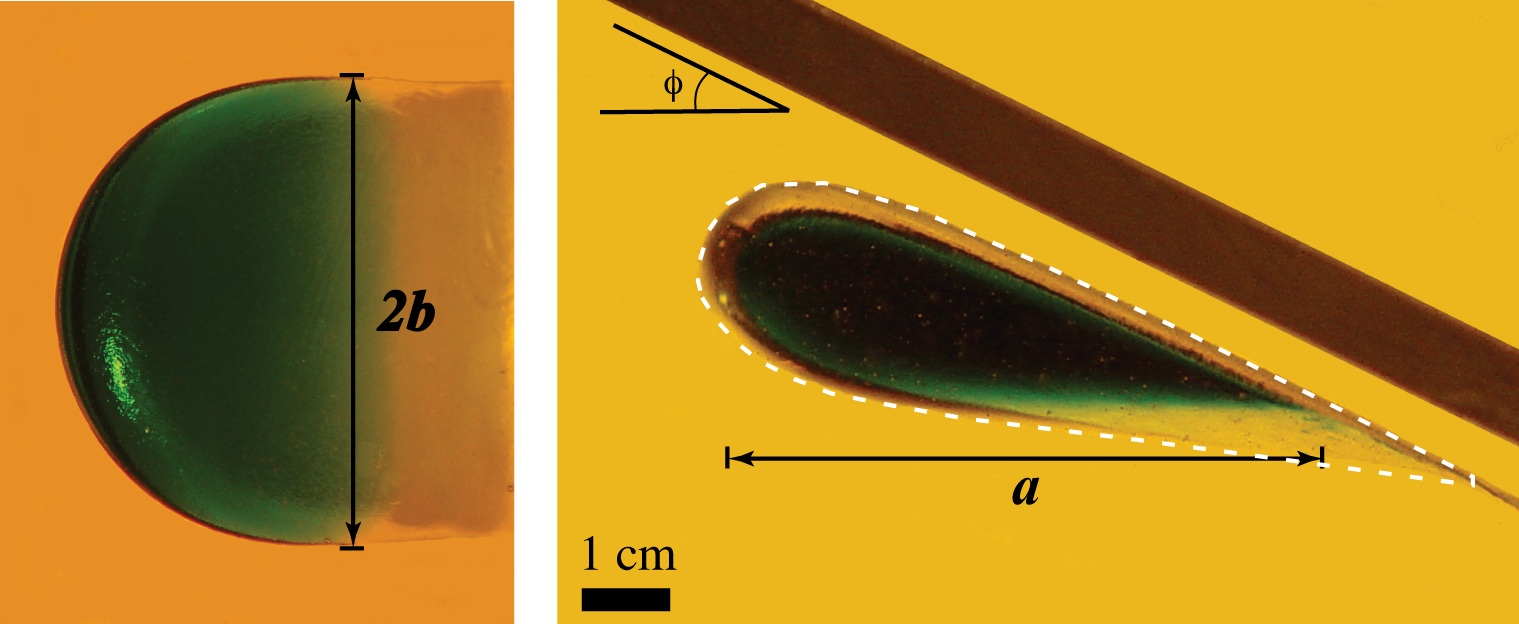
Shape of a bubble (water) rising through a much more viscous and miscible fluid (corn syrup) and below a sloping surface. From the work of Jim Watkins and Chris Huber.

Shape of a bubble (water) rising through a much more viscous and miscible fluid (corn syrup) and below a sloping surface. From the work of Jim Watkins and Chris Huber.
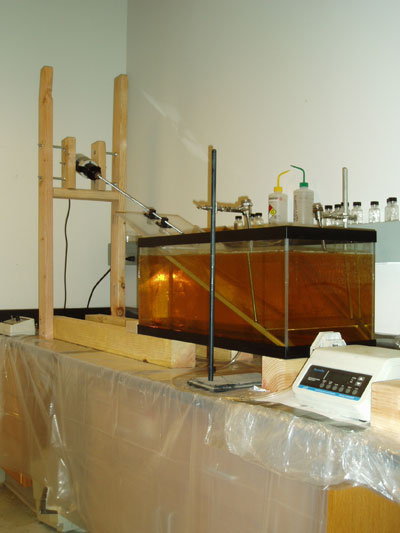
Set up for the bubble experiment.
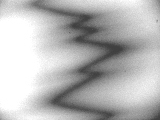
IR (8-14 micron) image of triangular rifts. Black is hot (molten wax),
white is colder (thick, solid wax).
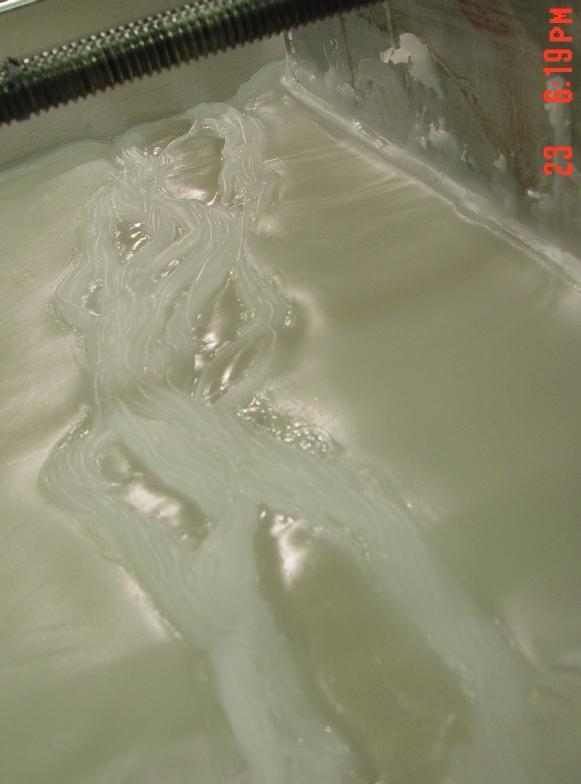
Photograph of surface features formed on a periodically
deformed layer of solid wax (see Manga and Sinton (2004)
for details). These experiments were designed to better understand
the conditions and dynamics that lead to the formation of lineaments on
Jupiter's icy satellites (e.g., bands and rirdges on Europa).
Similar wax experiments have provided insight into
mid ocean ridge structure (Oldenburg and Brune, 1972, 1975;
Ragnarsson et al., 1996).
These experiments were designed and performed by Atsuko Namiki. The set up is shown below.
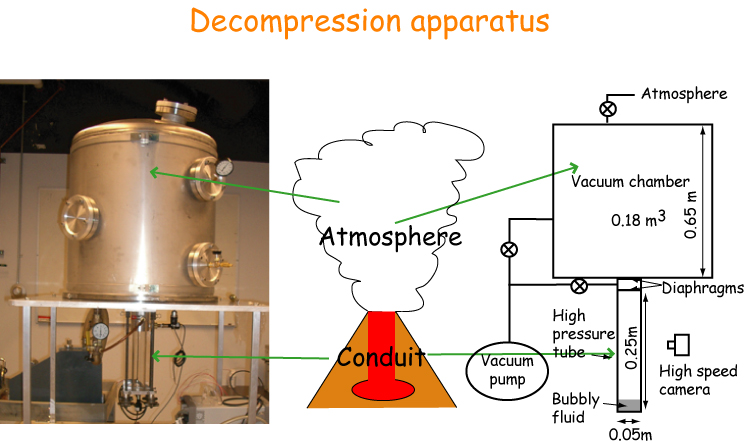
Click to see MOVIE (reduced resolution but still 10 Mb) of some experiments. In these movies you are watching the response of a bubbly fluid to rapid decompression; each panel shows only the shock tube. 2000 frames are capture per second, and the whole movie last about 20 milliseconds. From top to bottom, the initial bubble content decreases. Only in the top experiment does the fluid erupt explosively from the sample holder.
Convection in stably stratified fluidsBig tanks
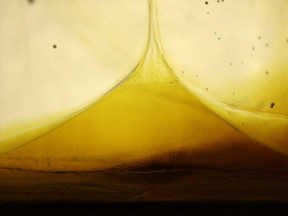
The picture above shows an oblique few of a dense layer of (red) vegetable oil beneath a (colourless) layer of miscible polybutene oil -- this setup may be analogous to the situation in the Earth's lower mantle where a compositionally distinct dense layer (due to partial melt, the presence of metals, or the segregation of subducted materials) appears to exist. The dynamic and thermal coupling of the dense layer with the overlying fluid allows persistent plume conduits (right) to form and stabilizes the location of these conduits. From Jellinek and Manga, Nature 2002; see press release for another explanation.
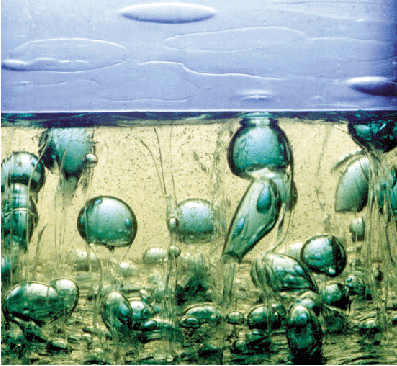
In this photograph light, low viscosity (input) fluid is released at a fixed but slow rate through a permeable plate into an overlying denser layer of very viscous (ambient) fluid. Convection takes the form of plumes with large spherical heads and narrow trailing conduits. Upwelling input fluid passes through the ambient layer and ponds without causing any significant mixing. From Jellinek, Kerr and Griffiths.

Light low viscosity fluid is released at a very high rate into an overlying dense more viscous fluid. Upwelling fluid entrains ambient fluid, thereby driving large-scale turbulent circulation. The resulting overturning motions produce extensive mixing and no stratification. From Jellinek, Kerr and Griffiths.
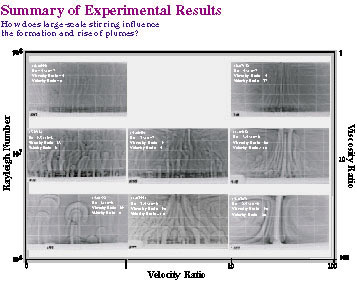
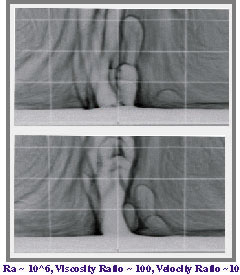

Rising bubbles in corn syrup. Re < 0.001. The Bond number, the ratio
of buoyancy to surface
tension stresses, is about 40. Photographs
are taken a 5 second intervals.
Bubble radii about about 1 cm.
See Manga and Stone, J. Fluid Mech. 1993 and 1995 for
more details.